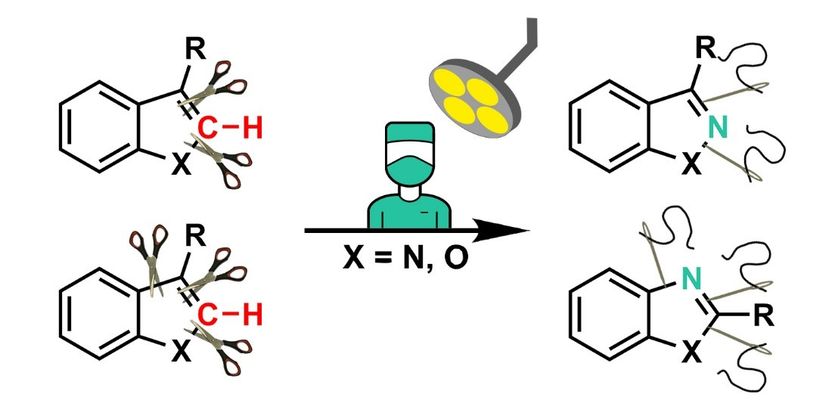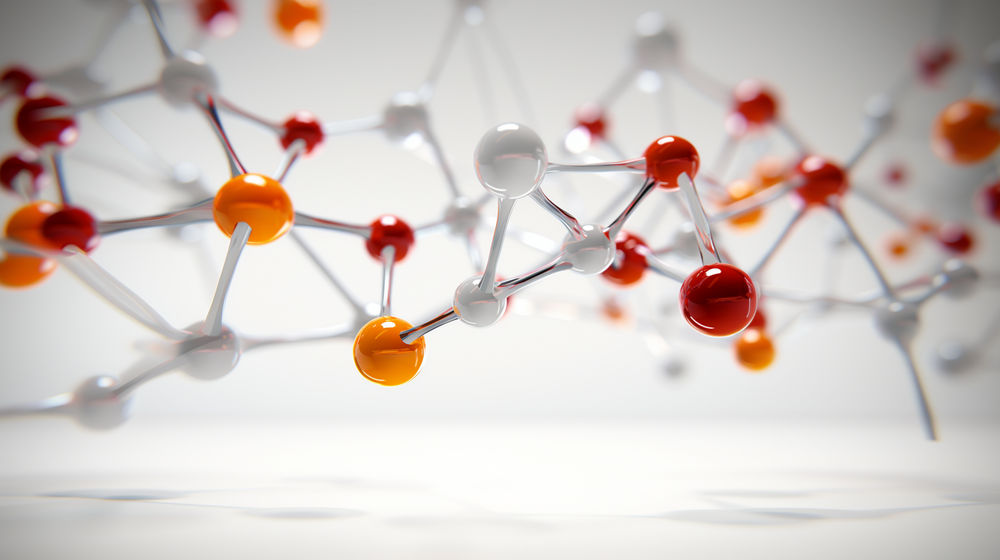New atom-swapping method applied to complex organic structures
Chemists have successfully substituted carbon atoms with nitrogen atoms in pharmaceutical components: New possibilities for drug design
Advertisement
skeletal editing is a modern approach to chemical synthesis. By making precise alterations at the atomic level, researchers are able to directly convert existing drug scaffolds into new, biologically relevant compounds. A team led by chemist Prof Armido Studer from the University of Münster has developed a new strategy based on this technique to swap carbon atoms with nitrogen atoms (“C-to-N atom swapping”). The process functions within indole and benzofuran frameworks. These chemical structures, which contain two molecular rings consisting mainly of carbon, are common building blocks of pharmaceuticals and natural products.

Illustration of the swapping technique (C: carbon; H: hydrogen; N: nitrogen): The figure shows the chemical structures of indoles (X corresponds to N) and benzofurans (X corresponds to O), which serve as substrates for skeletal editing, similar to molecular surgery. In these biologically relevant frameworks, a nitrogen atom replaces a carbon atom. This carbon-nitrogen substitution can be accompanied by a restructuring of the molecular skeleton after the carbon has been removed and the nitrogen incorporated.
© AK Studer
“This technique expands the synthetic toolbox available for skeletal editing,” explains doctoral student Zhe Wang, who carried out most of the experimental work. It represents a step forward in the development of new molecules from established pharmacophores, i.e. the molecular components responsible for pharmacological effects.
The study, published in the journal Nature, shows that indoles can be converted into indazoles by swapping C to N atoms. The transformation proceeds through ring-opened intermediates, from which benzimidazoles can also be produced by shifting the nitrogen atom. The same strategy applies to benzofurans, yielding either benzisoxazoles or benzoxazoles, depending on the direction of structural reassembly. These compound classes—indazoles, benzimidazoles, benzisoxazoles and benzoxazoles—are known for their biological activity and widespread presence in therapeutics and natural products.
Original publication
Other news from the department science
Most read news
More news from our other portals
See the theme worlds for related content
Topic world Synthesis
Chemical synthesis is at the heart of modern chemistry and enables the targeted production of molecules with specific properties. By combining starting materials in defined reaction conditions, chemists can create a wide range of compounds, from simple molecules to complex active ingredients.

Topic world Synthesis
Chemical synthesis is at the heart of modern chemistry and enables the targeted production of molecules with specific properties. By combining starting materials in defined reaction conditions, chemists can create a wide range of compounds, from simple molecules to complex active ingredients.




























































